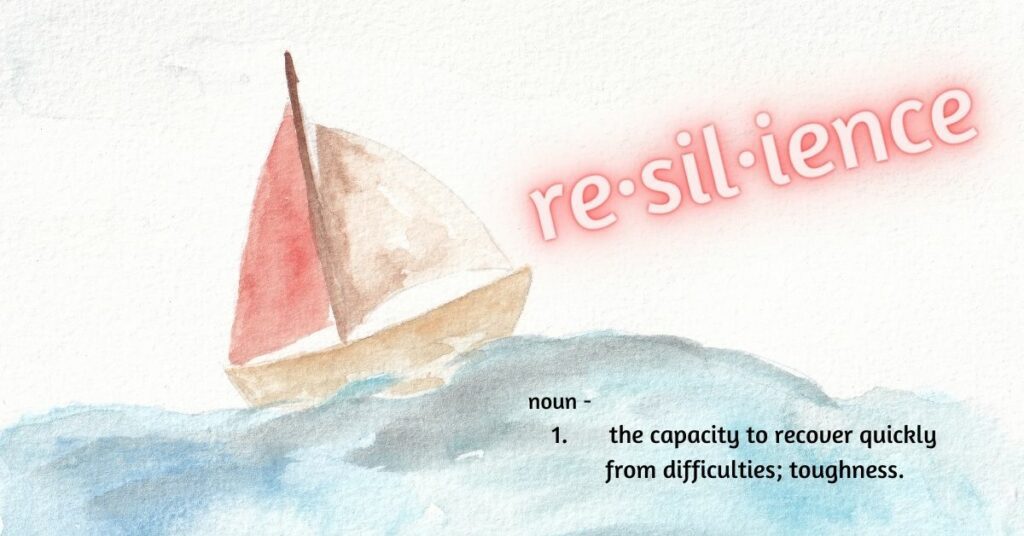Shoring-up your resilience
Resilience is a word that comes to mind when we talk about Organizational Health; when a storm hits, the strong boats with healthy crews don’t capsize.
Resiliency is more critical now than ever before. Now is the time for leaders to get their teams behaviourally cohesive and firmly aligned around their clarity, so they can be in the best position to weather the ‘recession storm’ that is predicted in the near future.
This is as strategic and real as anything else you can do. Maybe more so.
The healthier your organization, the more you’ll be able to withstand an external force. The healthier you are, the more you can find opportunities and weather the storm. When the storm is over, you’ll be in a position of competitive advantage and in a position to help others.
In this blog post, we’re sharing specific actions leaders can take to build a healthier organization to minimize or eradicate the dysfunctions that hinder your company’s health.

The greatest achievement of any business is organizational health. According to Patrick Lencioni, author of The Advantage, “an organization is healthy when it is whole, consistent and complete, when its management, operations, strategy and culture fit together and make sense. You know you have it when you have minimal politics and confusion, high degrees of morale and productivity, and very low turnover among good employees.”
Clarity is crucial to businesses. It aligns the purpose and passion of team members. Clarity becomes a way to overcome obstacles and achieve new goals. It is also all that matters when it comes to building a powerful organization.
Healthy organizations are disciplined. Creating this type of environment is not an easy task.
There are four practices team leaders can put into place to get started.
1. Build a strong leadership team
When the leadership team does not work cohesively, the organization cannot be successful. In any type of organization, a disconnect at the top results in a lack of health throughout the organization. It’s the trickle down effect.
There are five fundamental ways leaders need to be behaviourally cohesive. Read on to learn more.
2. Achieve leadership clarity
Leaders need to become crystal clear on six critical questions, to minimize the potential for confusion throughout the organization.
- Why do we exist?
- How do we behave?
- What do we do?
- How will we succeed?
- What is the most important thing right now?
- Who is in charge of what?
3. Over-communicate your clarity
After the leadership team has achieved clarity on the most important organizational health issues, they need to communicate the answers clearly to their team members.
Every leader is a CRO – a Chief Reminding Officer. Repeat your messages clearly, with enthusiasm, and with intention. Constantly remind your people about why you do what you do, how everyone is expected to behave, what you actually do, what are they keys to your success, what is most important right now, and who is responsible for what.
Don’t be afraid to over-communicate. Nobody leaves organizations because they have too much info – but way too many leave cause they don’t know what is going on.
4. Reinforce your clarity
For an organization to remain healthy over time, it must establish a few critical, non-bureaucratic systems to enforce clarity in every process that involves people. Every policy, every program, every activity should be designed to remind employees what is most important.
This can be sustained by ensuring consistency in hiring, managing performance, rewards and recognition, employee dismissal, and most importantly, through your meetings.
What are the steps to a strong team?
In Patrick Lencioni’s book, The Five Dysfunctions of a Team, he outlines five key reasons why building a strong & cohesive team is so challenging. As a leader, it is important to carefully consider the areas where your team needs to improve. It is a bottom-up model, so without building success in each one, your ability to achieve results will be limited.
Lack of trust
The first dysfunction of any team is the absence of trust. Being vulnerable is a scary thing for team members and if they fear it, it prevents building trust with one another. Trust is critical to a team. It is the foundation of every team – without it, you can’t build a strong team.
Fear of conflict
The second dysfunction is fearing conflict. Trying to preserve artificial harmony suppresses productive conflict and conversations among the team. Conflict is necessary in order to find the truth and best possible answers.
Lack of commitment
A lack of commitment comes in as the third dysfunction. Commitment is when everyone buys into the decisions and sticks with them. Without clarity, team members can’t make decisions that they can stick to.
Avoiding accountability
This dysfunction stems from the need to avoid interpersonal discomfort. Unfortunately, this prevents team members from holding themselves, and each other, accountable for behaviour and performance.
Not sharing collective results
While pursuing individual goals and status, the collective goals and success of the team take a back seat. In order to focus on the organization’s results, team members need to start with building trust, engaging in healthy conflict, committing to team decisions, and holding each other accountable.
“If you get all the people in an organization rowing in the same direction, you could dominate any industry, in any market, against any competition, at any time,” says Patrick Lencioni.
What is the difference between a smart team and a healthy team?
Smart organizations are good at making decisions in regards to finance, marketing, strategy, and tech. Healthy organizations have minimal politics, low turnover rates, minimal confusion, and high degrees of morality.
In order to maximize potential, organizations need to be both smart and healthy. The majority of organizations are smart enough to achieve great success. The problem is most of them are not necessarily healthy. The health of the organization multiplies the intelligence.
If a company is smart but not healthy, they will not be able to tap into their full potential. However, when intelligence and health are combined, it works on ways to get smarter, therefore, more successful.
It doesn’t take a long time to improve your organizational health. It does require time, but not years. You can make a huge difference in a few short months.
NOW is the time to shore up for a possible recession
We don’t know what 2023 will bring but any improvements you make to your organizational health in this final quarter of 2022 will improve your position going into whatever challenges lie ahead.
What do you do to ensure the health of your organization? Are you going to take any action as a result of reading this blog? Leave your thoughts in a comment.
Not sure what to do? Contact NexLevel today for a FREE Organizational Health Check to find out where you are now and what simple steps can help you be better prepared for the storm ahead.
https://nexlevelteams.com/org-health-survey-form/
At NexLevel, we’re experts in building healthy organizations through cohesive teams and engaged employees. We will help you and your employees become the high-performance team you’ve always wanted to be by focusing on collaboration, creativity, culture, and connection.




